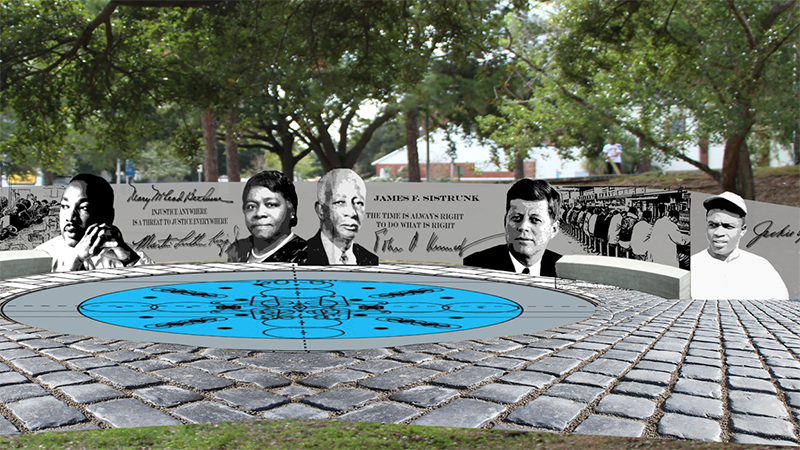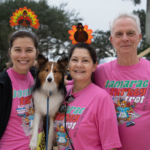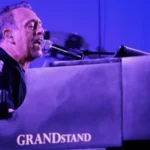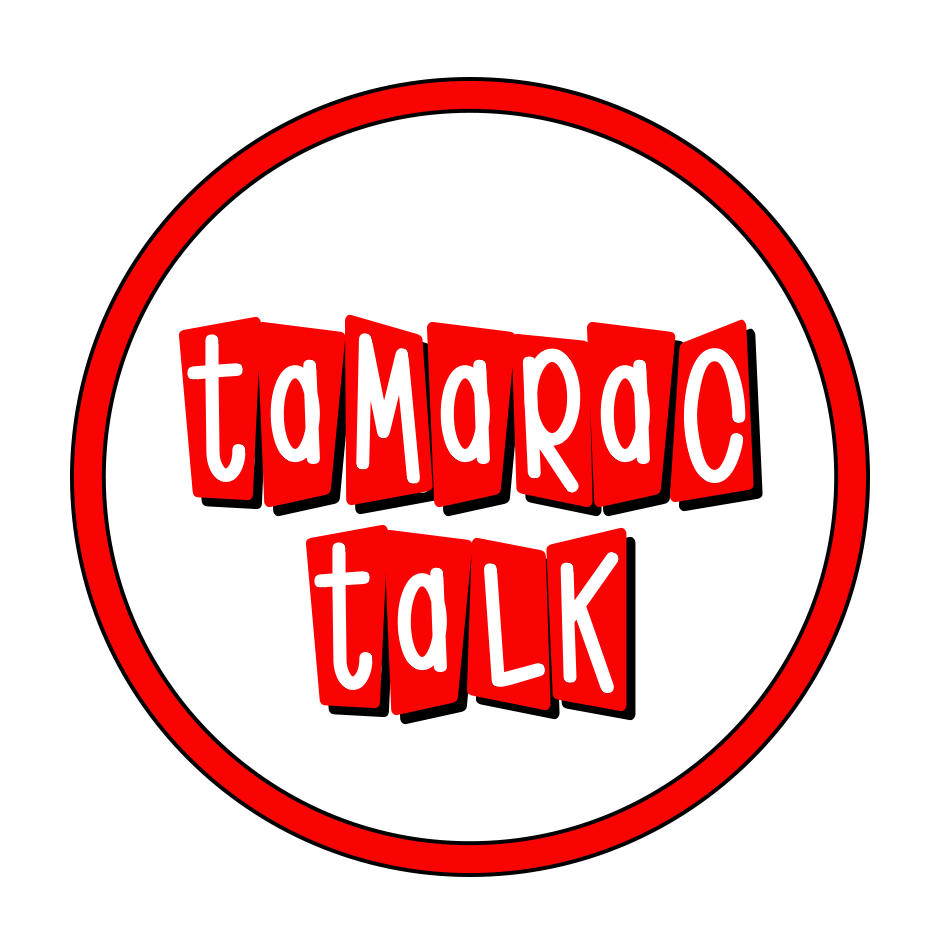
Social Justice Wall Design Concept
By Agrippina Fadel
Will the new Social Justice Wall in Tamarac reflect the city’s diverse population?
Some residents do not believe so, so they reached out to Mayor Michelle Gomez with a suggestion to add more names to the list of heroes to be honored.
The city commission unanimously supported the conceptual drawing of the Social Justice Wall at the May 11 meeting. Funded through the public art initiative, the wall includes portraits and quotes from social justice leaders.
The approved concept included abolitionist Harriet Tubman, who used the Underground Railroad to rescue dozens of enslaved people; the leader of the civil rights movement, Martin Luther King Jr., presidential advisor, and educator Mary McLeod Bethune, who opened one of the first schools for African American girls in Daytona, Florida; James F. Sistrunk, the first black medical doctor to practice in Broward County; 35th President John F. Kennedy, and Jackie Robinson, the first African American to play in Major League Baseball.
At the June 22 meeting, Gomez suggested reopening the discussion, stating she agreed with residents and did not believe the selection would be an inclusive and equitable representation of the people living in Tamarac.
“While each person currently selected on our Justice Wall is very much worthy, the resulting wall is not a complete reflection of our city,” said the mayor.
She suggested adding panels to the wall or replacing some existing designs and people, so the final art piece truly reflects Tamarac’s community. Gomez said she thinks the wall should have a local activist representing Americans with Disabilities, African American, Asian Pacific, Caucasian, Hispanic, LGBTQ, and Native American candidates.
Gomez added that only two heroes on the current version of the wall are local (McLeod Bethune and Sistrunk), including activists from South Florida was also an essential goal of the project. She also mentioned that while the city coordinated several outreach meetings and artist Michael Parker attended some of them and reached out to people and local organizations, not many residents attended the meetings, so the voice of the community overall was not heard, and the selection process was far from perfect.
Other commission members were not inclined to support the mayor, with all but commissioner Elvin Villalobos saying they preferred to leave the wall design “as is” and consider another monument to honor local social justice heroes at some point in the future.
Commissioner Debra Placko said she thinks people will “get offended” if the city starts taking some of the approved social justice heroes’ names off the wall.
Vice Mayor Mike Gelin said he finds the discussion “a little bit insulting” to be brought up late.
“I am not opposed to acknowledging or celebrating any other community, but this commission made a decision on this,” he said, adding that Gomez has been on the commission since 2009 and if she had a concern about honoring local civil rights activists, she could have advocated for it more in the past.
“Is this just a situation where there are too many black faces for you on that wall, and you want us to do something different? Because that’s what it sounds like,” retorted Gelin, to a harsh rebuke from the city attorney John Herin.
After a lengthy discussion, with Placko’s limited support, Gomez and Villalobos approved adding one extra panel to the wall that will honor Mexican-American labor leader and civil rights activist Cesar Chavez.
Artist Michael Parker said adding another hero means that the composition of the design must change to accommodate it. However, he is considering some edits as well.
“I was recently in town to look at the wall and the elements in the park, such as the splash pad and hardscaping. A site visit is very telling in terms of proximities and scale. After standing in the space, I’ve decided to shift the design approach to better fit the feel of the space,” said Parker, adding that he is currently working on some mockups to see “what might be a better solution.”
He said the wall is poured, the splash pad is in, and [it] looks nearly complete. “The site is coming along and looks really great at this stage,” Parker added.
The artist said it is still too early to discuss the tentative installation date.
“With changes still being made to the design at this stage and reevaluating the material to fit the park’s design better, it’s difficult to put a date to this,” Parker said, adding that the art piece has sensitive and socially relevant content, so it’s important to give it “as much consideration as it needs.”
“It will be a part of the community space for many years and will retain its importance if the thought is put in now,” said Parker.
The construction of Tamarac Village Park, which will house the Social Justice Wall, is slated for completion in the third quarter of 2022. It’s part of the development by JKM developers that includes new residential and retail constructions, public areas, and the Town Center located at Commercial Boulevard and NW 94th Avenue.
Got News in Tamarac, Lauderhill, or North Lauderdale? Send it to Tamarac Talk.
Author Profile

Latest entries
 EventsNovember 21, 2024Register Now for Tamarac’s 44th Annual Turkey Trot
EventsNovember 21, 2024Register Now for Tamarac’s 44th Annual Turkey Trot EventsNovember 18, 2024Ticket Alert: Carole King Tribute with Suzanne O. Davis at Kings Point
EventsNovember 18, 2024Ticket Alert: Carole King Tribute with Suzanne O. Davis at Kings Point EventsNovember 12, 2024Celebrate Tamarac Elementary School’s 50th Anniversary at Community and Alumni Event
EventsNovember 12, 2024Celebrate Tamarac Elementary School’s 50th Anniversary at Community and Alumni Event EventsNovember 11, 2024Experience Billy Joel’s Hits Live with Tony Monaco and Turnstiles
EventsNovember 11, 2024Experience Billy Joel’s Hits Live with Tony Monaco and Turnstiles







